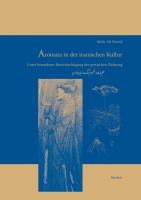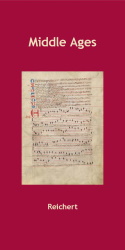Search
Aromata in der iranischen Kultur
unter besonderer Berücksichtigung der persischen Dichtung
2010
17.0 x 24.0 cm, 368 p., 88 illustrations b/w, hardback
ISBN: 9783895006807
go to ebook version
17.0 x 24.0 cm, 368 p., 88 illustrations b/w, hardback
79,00 €
ISBN: 9783895006807
go to ebook version
Short Description
This volume is the result of more than 10 years' research in Persian culture from the Achaemenid period (559 B.C.) until the end of the Safavids’ time (1722 A.D.). The main concern was finding out what the sources tell us about aromata (fragrances), how the fragrances were used in daily life and how they are reflected in Persian literature, especially in poetic language.Description
This study has been undertaken to show how fragrances are referred to in Persian literature and what part they played in Persian art and archaeology. Arabian, Greek and Indian source material as well as secondary literature have been consulted. This to-date quite unique monography deals with the aromatas’ composition, their countries of origin, but also with their diverse metaphoric handling in poetry and with their role in religious ceremonies, weddings, general writing, culinary art, building industry, and habits of giving presents.Geographically this study focuses on the Iranian culture area which far exceeded today’s Iranian national territory in the times of the Achaemenides, Parthians and Sassanides, so much so that in part it even included Afghanistan, Tajikistan, Uzbekistan, Turkmenistan, Pakistan and even parts of India.
The period considered here beginns with rule of the Achaemenides (550-33 BC) and ends with the Safawid period (1501-1722 AD). In respect to customs and traditions there is little change to be seen in this period, except for the Mongolian era. In particular The Sasanians (224-642 AD), who viwed themselves as the Achaemenides’ successors, were concerned with the preservation of the handed down way of life. Their cultural heritage was taken up by the Abbasides (750-1258), Samanides (892-999), Buyides (945-1055), Ghaznavids (962-1040) and Seljuks (1000-1218).That is why – amongst other traditions - the continuous use of aromas at enthronement ceremonies, receptions, as well as celebrations of Nowruz and Mehregan survived at least until the Seljuks period.
The study consists of 4 parts:
Part I: Aromata of animal provenance (ambergris, castor, musk, zibet)
Part II: Aromata of vegetable matter (aloe wood, camphor, costus, nard, rose water, saffron, sandalwood)
Part III: Mixed fragrances (ointments, pastilles, powders)
Part IV: Aromatic resins, balsams, oils and mannas




 Table of Contents
Table of Contents

 Neuerscheinungen 2023/2024
Neuerscheinungen 2023/2024
 Gesamtverzeichnis 2023/2024
Gesamtverzeichnis 2023/2024
 Katalog Oriental Studies & Linguistics
Katalog Oriental Studies & Linguistics
 Mittelalter
Mittelalter
 Deutsche Inschriften
Deutsche Inschriften
 Musiktherapie
Musiktherapie
 Literaturen im Kontext
Literaturen im Kontext